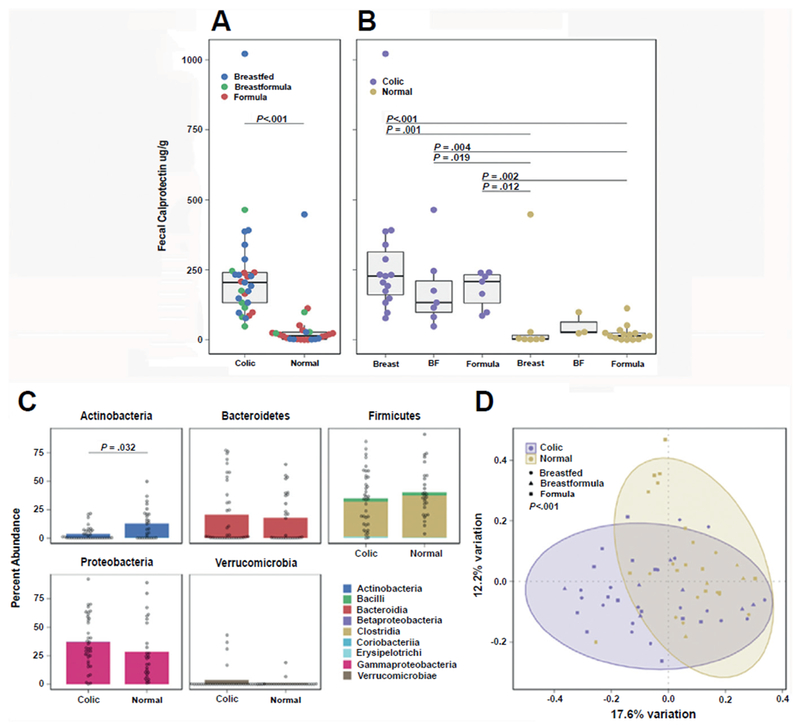Fig. 3.

([ISP]A, [ISP][ISP]B): Relationship between fecal calprotectin, colic, and feeding modality in infants. (C, D): Fecal microbial community composition in infants with and without colic. (A) Infants with colic (n = 29) have significantly higher levels of fecal calprotectin than normal controls (n = 25) (P<.0001, Wilcoxon rank sum test). (B) Breastfed infants significantly higher levels of fecal calprotectin than Formula fed infants (P = .019, Kruskal-Wallis with post hoc Dunn’s test and correction for multiple comparisons). (C) Phylum/Classlevel composition of colic (n = 37) vs control (n = 28) samples. Normal control samples have a significantly higher abundance of Actinobacteria, (P = .032, Wilcoxon rank sum tests withcorrection for multiple comparisons). (D) Microbial β-diversity composition of infants with and without colic is significantly different (P = .003, permutational multivariate analysis of variance). (Adapted from Rhoads JM, Collins J, Fatheree NY, et al. Infant colic represents gut inflammation and dysbiosis. J Pediatr, in press; with permission.)
